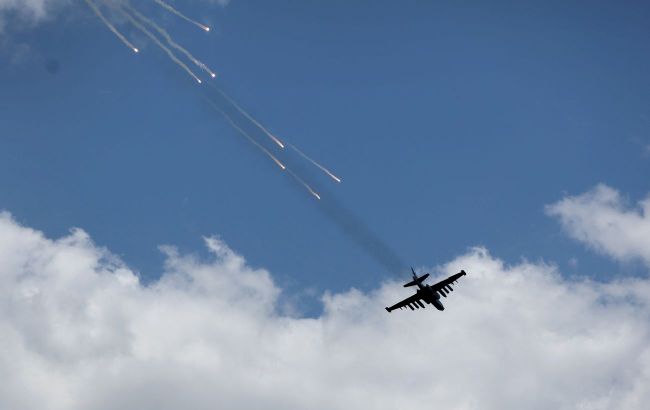British intelligence warns of danger of 500-kilogram Russian cluster bombs
 Russia has started using 500-kilogram cluster bombs (Photo: Getty Images)
Russia has started using 500-kilogram cluster bombs (Photo: Getty Images)
From November 2023, the Russian Air Force will likely use the RBK-500 500-kilogram cassette bombs more frequently. They are equipped with a guided planning device, according to the Ministry of Defense of the United Kingdom on X social media.
As stated in the summary, each RBK-500 releases approximately 100 to 350 submunitions, depending on the variant. Each submunition typically explodes with hundreds of high-speed fragments or a larger anti-tank charge.
The RBK-500 has been deployed against Ukrainian forces near Vuhledar and near Avdiivka in Donetsk.
According to British intelligence, there is a real possibility that, as with other air-dropped bombs, Russia has recently integrated the RBK-500 with a guided planning device, UMPC. This allows the carrier aircraft to drop the munition several kilometers from the target.
"Russia's glide bomb kits have generally achieved poor accuracy.
However, with its large number of sub-munitions, a single RBK-500 can cause effects over an area of several hundred meters, increasing the chance of inflicting at least some damage on the intended target," noted the Ministry of Defense of Britain.
Cluster munitions
This type of mortar, upon detonation, releases so-called submunitions (smaller in size). They are typically used to destroy personnel and equipment. They can be used to destroy airstrips and power transmission lines.
For several months, Ukraine has been seeking the supply of cluster munitions from the United States. In July 2023, Washington began delivering them to Kyiv. U.S. President Joe Biden stated that such projectiles would help the Ukrainian Armed Forces continue the counteroffensive.
Cluster munitions have proven themselves well on the battlefield against Russian forces. Additionally, in October, the United States transferred ATACMS missiles with cluster munitions to Ukraine, with a range of up to 160 km, allowing the Ukrainian Armed Forces to strike the rear areas of Russian forces, including airfields in Luhansk and Berdyansk.

